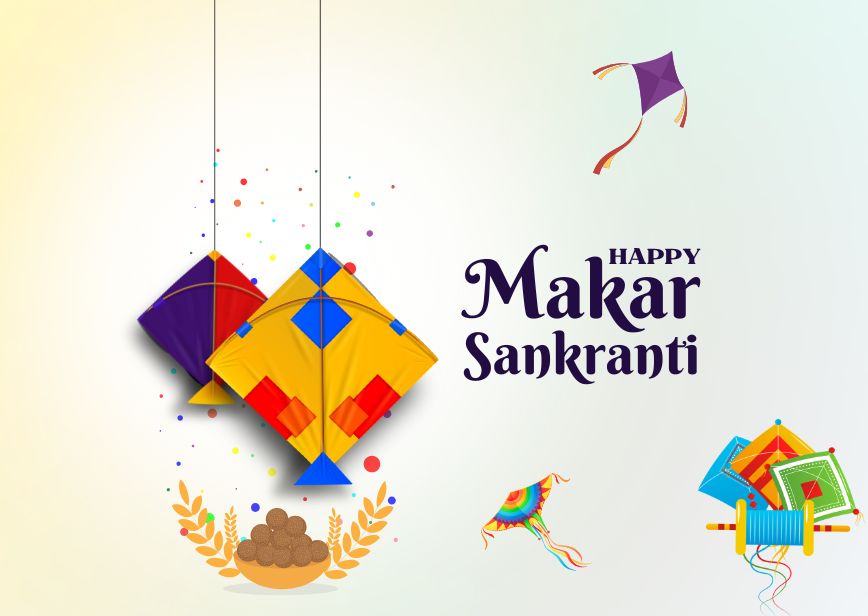
Makar Sankranti is a vibrant and widely celebrated harvest festival in India that marks the sun's transition into the zodiac sign of Capricorn (Makara), heralding longer days and the end of winter solstice. This auspicious day, usually on January 14th or 15th, is a time of joy, gratitude, and renewal. This festival holds immense religious, agricultural, and seasonal significance.
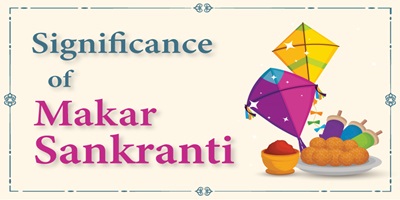
Makar Sankranti is a day dedicated to Surya (the Sun God) that symbolizes the dispelling of darkness and the onset of prosperity. In Vedic astrology, the sun's entry into Capricorn is believed to bring positive energy, making it an ideal day for sacred rituals, prayers, and charity. People take holy dips in rivers like the Ganga, Yamuna, and Godavari, seeking purification and blessings.

Makar Sankranti is deeply rooted in agrarian traditions. It coincides with the harvest season and celebrates the hard work of farmers. Across India, this festival is marked by gratitude to nature for a bountiful yield.
• Pongal (Tamil Nadu): A four-day festival that features traditional dishes like Pongal rice, kolam (rangoli), and cattle worship.
• Lohri (Punjab): It is Celebrated here with bonfires, dancing, and feasting on sesame seeds, jaggery, and peanuts.
• Uttarayan (Gujarat): It's known for colorful kite flying here, with the skies filled with vibrant kites.
• Bhogali Bihu (Assam): A harvest festival that features community feasts and traditional games.
• Khichdi (Uttar Pradesh and Bihar): Devotees prepare here khichdi as an offering and enjoy fairs and festivities.
1. Kite Flying: A hallmark of Makar Sankranti, especially in Gujarat and Rajasthan, symbolizes joy and freedom.
2. Food: Special dishes like till laddoo, and khichdi are prepared, symbolizing unity and warmth.
3. Charity: People donate clothes, food, and other essentials to the needy, as acts of kindness are believed to bring prosperity.
4. Bonfires and Dances: Communities gather to celebrate with music, dance, and lighting of bonfires, fostering togetherness.

To truly capture the essence of this vibrant festival, let's immerse into a visual journey through some captivating Makar Sankranti images:
Kites Galore: The sky transforms into a canvas of vibrant colors as people of all ages engage in the exhilarating sport of kite flying. The air is filled with cheerful chatter and laughter as kites dance and twirl, competing for dominance.
Sweet Delights: Makar Sankranti is incomplete without the lovely ritual of exchanging til laddoo with loved ones. This sweet treat symbolizes prosperity and good health.
Bonfires of Hope: Bonfires are lit across the country, symbolizing the burning of negativity and welcoming positivity. People gather around these bonfires, singing, dancing, and sharing stories.
Family and Friends: Makar Sankranti is a time for family and friends to unite, celebrate, and strengthen bonds. The festival is marked by festive meals, prayers, and joyous celebrations.
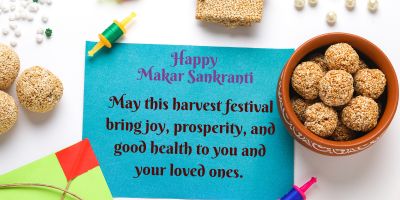
Here are some heartfelt Makar Sankranti wishes to make the celebration even more special:
• Happy Makar Sankranti May this harvest festival bring joy, prosperity, and good health to you and your loved ones.
• Wishing you a blessed Makar Sankranti filled with warmth, happiness, and delicious treats.
• Happy Makar Sankranti May the sun shine brightly upon you and your family.
• May the warmth of the sun and the sweetness of life fill your days with joy. Happy Makar Sankranti
• Sending you warm wishes on the auspicious occasion of Makar Sankranti. May this festival bring you abundance and happiness.
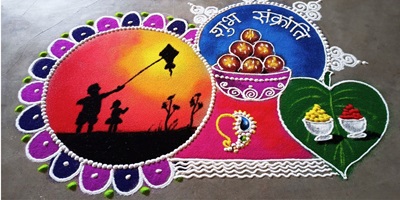
Makar Sankranti is the harvest festival celebrated across India. It is a time of joy, gratitude, and vibrant festivities. One of the most prominent features of this joyous occasion is the creation of intricate and colorful rangolis. These artworks, made using natural colors and materials, add a touch of magic and cheer to homes and public spaces.
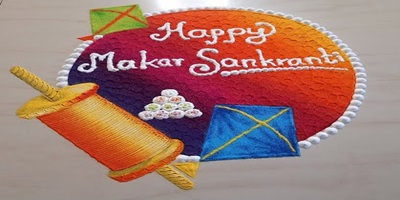
Rangolis are believed to welcome the new season, prosperity, and good fortune. The designs often depict symbols of harvest, such as grains, fruits, and sugarcane, expressing gratitude for nature's bounty. Rangolis are a form of artistic expression, showcasing creativity and cultural heritage. Creating rangolis is often a community activity, bringing people together and fostering a sense of togetherness.
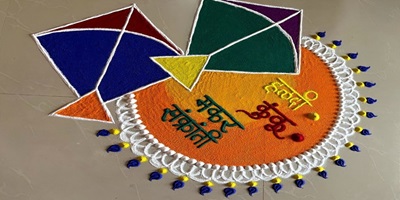
• Floral Designs: Incorporating marigolds, sunflowers, and other seasonal flowers add a natural beauty and fragrance to the rangoli.
• Kite Designs: Reflecting the kite-flying tradition associated with Makar Sankranti, kite-shaped designs are popular choices.
• Sun and Moon Designs: Representing the celestial bodies, these designs symbolize the changing seasons and the cycle of life.
• Geometric Patterns: Intricate geometric patterns, often inspired by traditional Indian art forms, create visually stunning and mesmerizing rangolis.
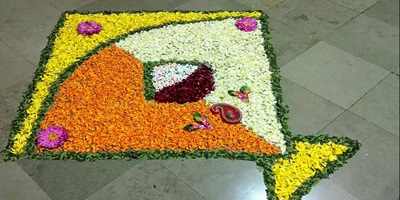
• Natural Colors: Colors derived from natural sources like turmeric, henna, and flowers are preferred for their eco-friendliness and cultural significance.
• Rice Flour: Rice flour is commonly used to create the base of the rangoli and intricate designs.
• Flowers and Leaves: Fresh flowers and leaves add a touch of natural beauty and fragrance.
• Diyas: Small earthen lamps are often placed around the rangoli to illuminate it and create a festive atmosphere.
We celebrate many festivals throughout the year in different styles. Every festival is unique, read about the most popular festivals of India like Jagannath Rath Yatra History, Date, time, Facts, images & Pongal History, Wishes, Images, Messages, Wallpaper, Food.